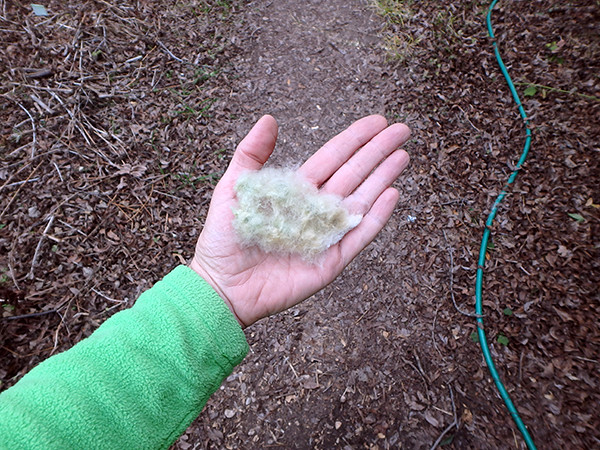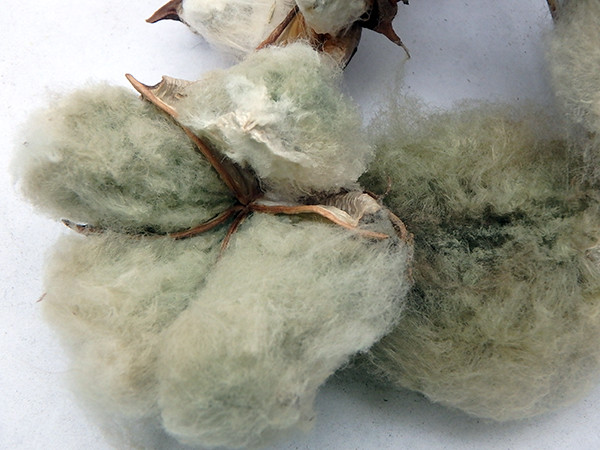|
|
Post by oldmobie on Oct 13, 2015 20:12:59 GMT -5
I just picked up some cotton beside the highway between Tallulah and Transylvania LA. (I was on vacation, I never see cotton grow around here.) I'd like to grow some of the seeds out as a novelty. I can't really imagine myself making thread or fabric.
Here are the questions:
1) These seeds were probably commercially grown. What are the odds that it's GMO?
2) Without having to spin or weave, what are some practical uses? I'm thinking fire starters, maybe adding to compost as a "brown", or giving it to my mother-in-law (who quilts) for batting. Ideas?
|
|
|
|
Post by oldmobie on Oct 13, 2015 22:32:30 GMT -5
3) How promiscuous is cotton? If I buy or trade for other seeds, and if my current seeds ARE likely to be GMO, will I have to get rid of them to avoid contamination? Or do they just self pollinate anyway?
|
|
|
|
Post by steev on Oct 14, 2015 1:12:08 GMT -5
Wasn't there a 70's novel, "Catch 22", where one of the characters wanted to dip cotton in chocolate, having bought a lot of Egyptian cotton, before the price had collapsed?
Jo sent me some various cotton seeds about three years back, but it just hasn't seemed propitious to launch that experiment. Lots of cotton is grown in SoCal (with lots of irrigation) but that's just not my NorCal farm.
|
|
|
|
Post by 12540dumont on Oct 14, 2015 12:11:57 GMT -5
Cotton makes an interesting wreath, packing material... stuffing for trapunto quilting. It's difficult to spin compared to wool. But is doable on a home scale. It's a lovely ornamental plant, particularly the colored cottons. I like the green from Southern Exposure. That said, in my many years of trying this plant, it often doesn't flower here. Cotton is very daylight sensitive. South of me, planting of cotton occurs from the end of May through the middle of June. The crop flowers in July, bolls are set and they don't open until September, the crop comes off the fields starting at the end of September through October (This is when you quit watering). The bolls are sharp when the cotton is ready to pick. To separate the seeds from the cotton you need a gin which can be purchased as a hand powered unit or electric motor type, from there you have cotton fiber and lint covered seeds. A linter (the machine that gets the last bits of cotton off the seeds is the same as the gin but with the blades nearly touching) If you're planning on making cotton seed oil. If you are determined to grow cotton in the north, you will need a dedicated green house, you will most likely also need heaters for those buildings and you will need a bee hive for pollination of the plants flowers. Great thing about growing cotton yourself, is that you don't need all the chemicals to grow cotton that are currently used. Just make sure you give it enough water during a heat wave. Here's a good link: www.cottonacres.com/how-to-grow-cotton/Need a gin? www.etsy.com/ca/listing/158748468/cotton-gin-plan-to-build-a-working-model |
|
|
|
Post by flowerweaver on Oct 14, 2015 19:20:05 GMT -5
South of me all the commercial cotton is GMO. It is sprayed heavily by crop dusters with something akin to Agent Orange (not sure if it is RoundUp, or something worse) to be defoliated before it is mechanically harvested. So even if your cotton prospect isn't GMO, there's that factor. I avoid going that way during harvest because it makes me choke up and gives me a headache for days. A lot of folks will buy organic to eat, but don't think about wearing it. One whiff of that stuff will change your mind. Cotton was grown in my town in the late 1800's probably through WWII. All the locals (including me) have lost our apple trees to cotton root rot nematodes. You are probably safe from that in your colder climate. It can cross, just like it's relative Okra. Mine is based on Erlene's Green and Alabama Green Lint. I usually plant it in mid-March to early April and harvest it late in the summer or even early fall. I'm a weaver, not a spinner. I grow a couple of short rows for fun.   |
|
|
|
Post by oldmobie on Oct 14, 2015 20:52:05 GMT -5
South of me all the commercial cotton is GMO. It can cross, just like it's relative Okra. Good to know. I'll plant it, so long as it's my only cotton. If I get any others, and they're known to be non-GMO, then I won't plant them until I'm rid of this unknown. That should prevent contamination. |
|
|
|
Post by Walk on Oct 15, 2015 8:37:23 GMT -5
South of me all the commercial cotton is GMO. It is sprayed heavily by crop dusters with something akin to Agent Orange (not sure if it is RoundUp, or something worse) to be defoliated before it is mechanically harvested. Sounds like 2-4D which is a component of Agent Orange. They also defoliate commercial potatoes before harvest so it's probably ending up on the plate of most Americans. I heard of a Wisconsin potato farmer who admitted he didn't eat his own farm's crop, but kept a small patch of organic spuds in his home garden for his family's consumption. |
|